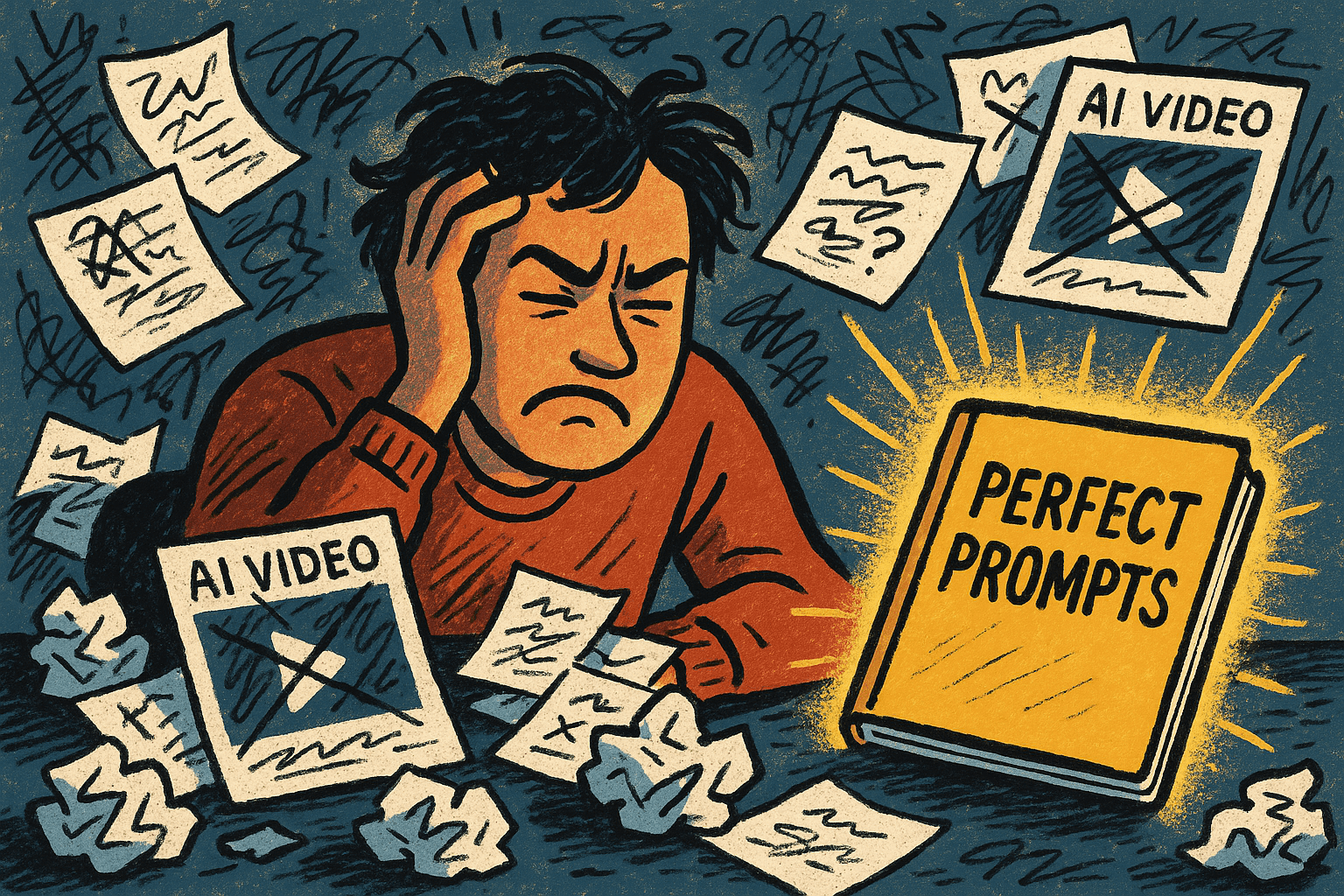
Why Most Creators Fail at Video Prompting (And How to Fix It)
Let’s cut to it: most creators are lazy prompters. They ask AI for a “cool video” and get frustrated when the result looks like a rushed school project.
Video prompting is a craft. In 2025, the best digital creatives are learning to write prompts with the same care as they write scripts or design storyboards.
Problem 1: Vague, Shallow Prompts
When you write: “Show a person working out,” the AI is forced to guess—and often it guesses wrong.
Solution: Be Highly Specific
Think like a director. Include:
- Who: Gender, age, mood
- What: Specific action, detailed setting
- When: Time of day, lighting conditions
- How: Camera angle, pacing, emotion
Example Prompt:
“Close-up shot of a 30-something Black woman doing yoga on a rooftop at golden hour, soft sunlight, relaxed atmosphere, light ambient music.”
Problem 2: Ignoring Visual & Emotional Cues
AI thrives on sensory details. The best prompts trigger a visual mood board in the AI’s “mind.”
Example Upgrade:
Instead of “show a man walking downtown,” try “Tracking shot of a young man in a sharp blue suit walking briskly through a bustling downtown, golden-hour lighting, confident mood, traffic sounds in the background.”
Problem 3: No Style Anchoring
AI video tools respond well to style references. You can guide AI by anchoring your prompts to visual genres.
Example Style Anchors:
- TikTok trending style
- Cinematic drone shot
- Wes Anderson framing
- High-key lighting, Instagram aesthetic
Example Prompt:
“POV TikTok-style video of hands assembling a flat white coffee, overhead angle, fast cuts, lo-fi background music, natural lighting.”
Pro Practice: Build a Prompt Library
The best creatives are saving their successful prompt structures and building reusable libraries, categorized by style, platform, and mood.


